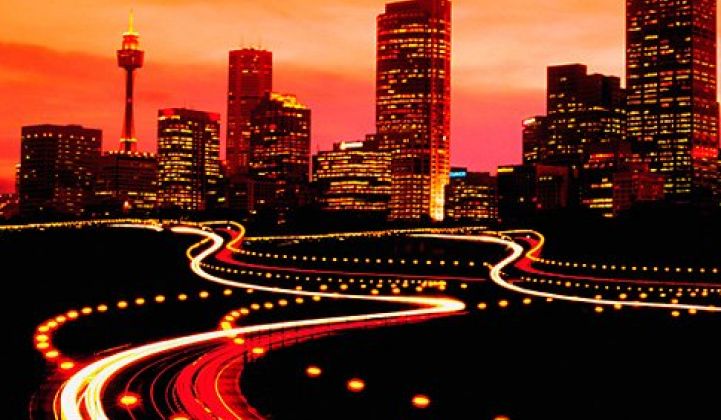Business-as-usual scenarios for global energy consumption and carbon emissions are always extremely depressing. So it's no surprise that the International Energy Agency's latest assessment of our current transportation policies paints a pretty bleak picture.
In the year 2000, there were 625 million light-duty vehicles around the world; by 2010, there were 850 million. In the next four decades, the number of vehicles will double -- doubling the vehicle-miles traveled and raising global warming pollution emissions by 70 percent, even as cars and trucks get more efficient.
Low and behold, China will help lead the increase in driving -- by a lot.

"In effect, the world has reached a turning point. The 19th and 20th centuries changed how we move through rapid transit and private motorization. The 21st century now must address how to move people and goods most efficiently in an energy-, budget-, time- and space-constrained world," writes IEA.
Of course, business-as-usual scenarios don't take into account major population, technology or policy shifts. As a majority of the world's population moves to cities, there's an opportunity to enhance urban transport systems and slow the rapid rise of automobile miles traveled.
Recognizing the potential to capture the benefits of urbanization, IEA has outlined a broad best-case scenario for cities that it projects could save as much as $70 trillion in expenditures on fuel, automobiles and infrastructure by 2050. The set of policies includes "avoiding" methods in emerging cities that ensure planning takes efficient transport into account; "shifting" methods that encourage use of public transit, cycling or walking; and "improving" policies that tighten fuel economy standards and encourage technological innovation.
Here's how that might play out in three different types of cities.
Urban sprawl
This is the hardest type of urban environment to tame, and therefore policies must go deeper than transport itself. IEA concludes that the most effective tools are progressive land-use policies and incentives for builders to encourage more dense development. In addition, tax credits for business might be used to get them settled closer to the "urban core." These can set the foundation for better transportation systems.
Congested cities
These cities may be dense, but they feature a lot of traffic. This is where better travel demand measures come into play. Vehicle quotas, taxes on vehicle registration and parking, and the use of IT to send real-time travel updates to drivers may be the most effective tools to shift habits in this type of environment.
Multi-modal cities
This type of city already features solid public transport and high densities. In environments like this, IEA suggests adding more bike lanes and bike sharing options, improving efficiencies or fuel types in public buses, and improving policies to include car-sharing services and other businesses in the "sharing economy."
Cities are diverse, and the options for transport are equally diverse. If the IEA's scenario for global driving habits is accurate, it's going to take the full range of options to make an impact.



